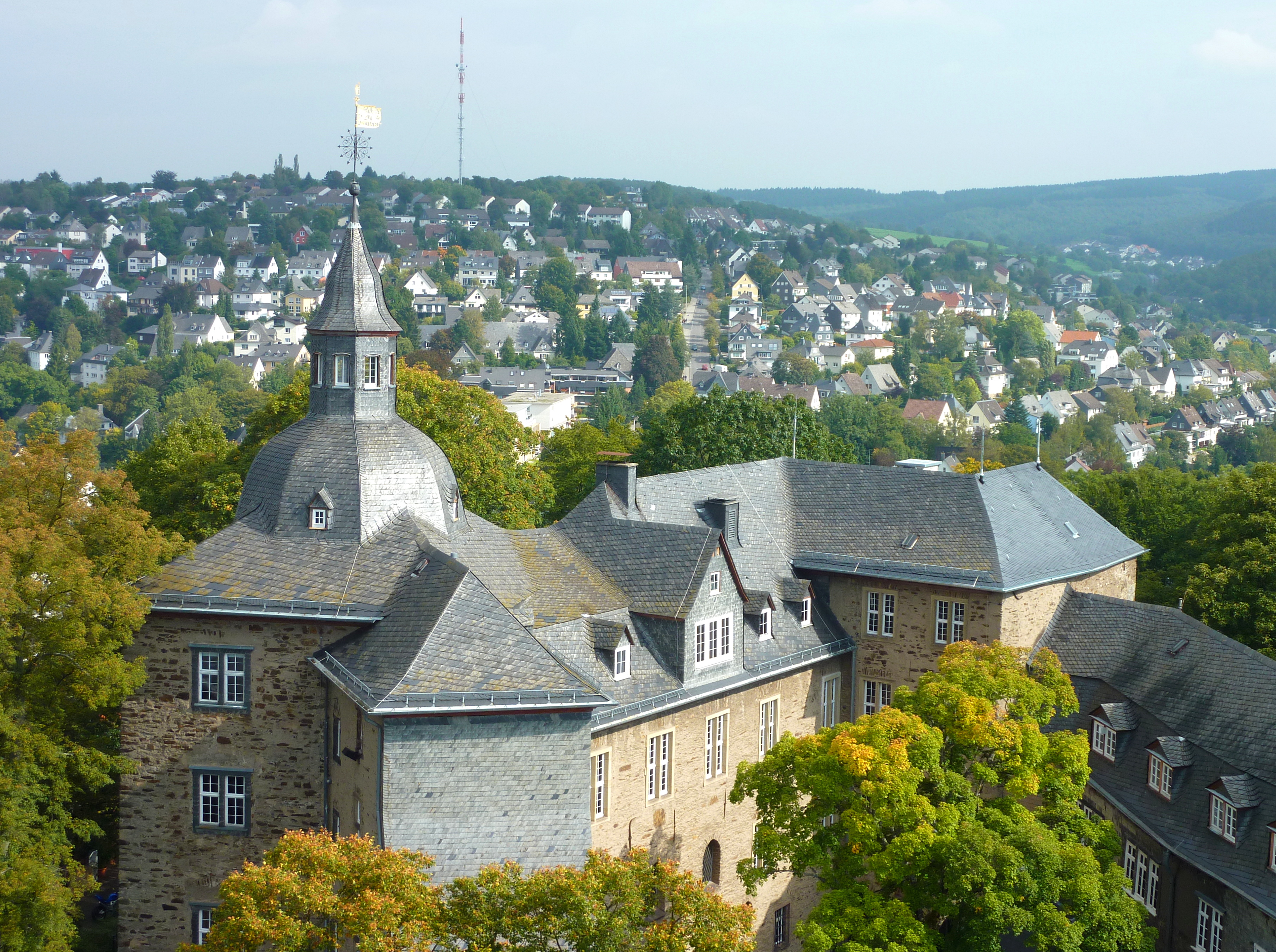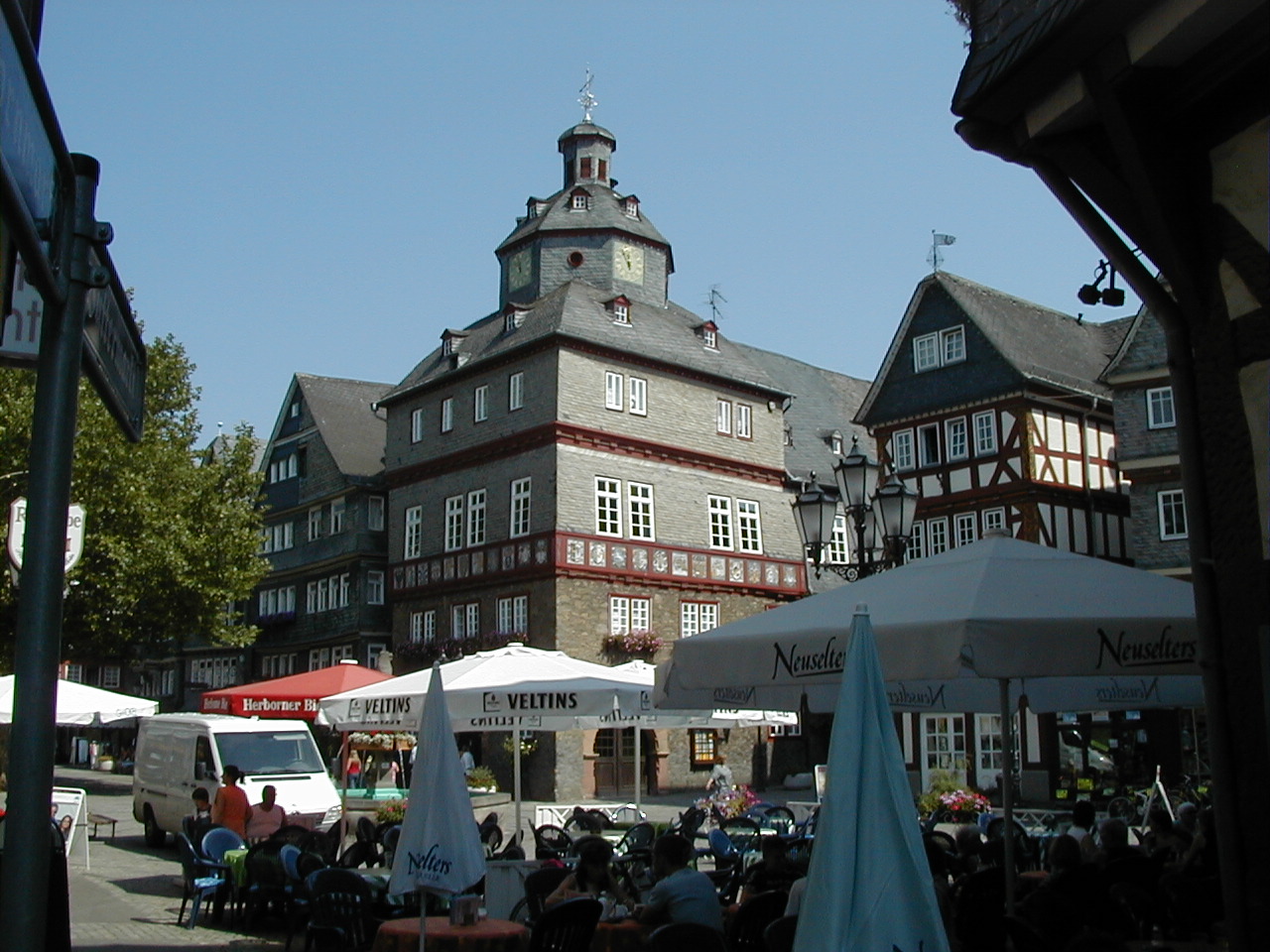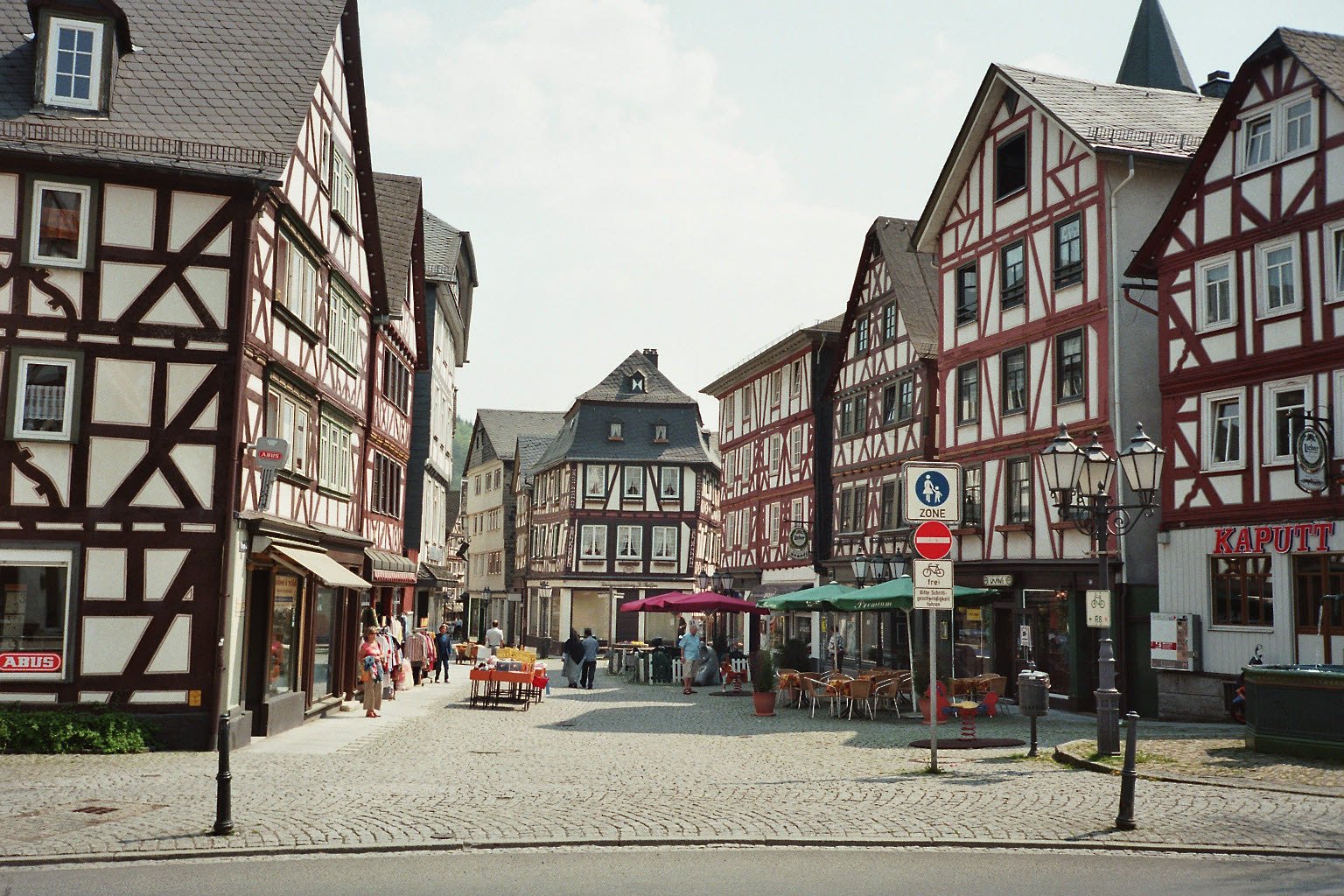|
Mary Of Looz-Heinsberg
Lady Mary of Looz-HeinsbergIn English and French the county her name originated from is called Looz, while in Dutch and German it is called Loon. (1424 – 20 April 1502), nl, Maria van Loon-Heinsberg, was a noble lady from the House of Looz and through marriage Countess of Nassau-Siegen. Biography Mary was born in 1424Schutte (1979), p. 41.Dek (1970), p. 69.Vorsterman van Oyen (1882), p. 93.Blok (1911), p. 1219.Van Ditzhuyzen (2004), p. 151, however, mentions 1426 as her year of birth. as the eldest daughter of Lord John II of Looz-Heinsberg and his second wife Countess Anne of Solms.Vorsterman van Oyen (1882), p. 94. Her older halfbrother John was Prince-bishop of Liège.Van Ditzhuyzen (2004), p. 152.Jansen (1979), p. 31. Mary married on 7 February 1440The sources do not mention a place of marriage. Van Ditzhuyzen (2004), p. 151 mentions the date of marriage 7/17 February 1440. to Count John IV of Nas ... [...More Info...] [...Related Items...] OR: [Wikipedia] [Google] [Baidu] |
Nassau-Siegen
Nassau-Siegen was a principality within the Holy Roman Empire that existed between 1303 and 1328, and again from 1606 to 1743. From 1626 to 1734, it was subdivided into Catholic and Protestant parts. Its capital was the city of Siegen, founded in 1224 and initially a condominium jointly owned by the archbishopric of Cologne and Nassau. It was located some 50 km east of Cologne, and it contained the modern localities of Freudenberg, Hilchenbach, Kreuztal, Siegen, and Wilnsdorf. First Nassau-Siegen (1303-1328) Nassau-Siegen was first created when the sons of Otto I divided their inheritance: * Henry received Nassau-Siegen * Emicho received Nassau-Hadamar * John received Nassau-Dillenburg John died childless in 1328 and Henry inherited Nassau-Dillenburg. Henry moved to Dillenburg and his descendants are known as the Nassau-Dillenburg line. Second Nassau-Siegen (1606-1743) After John VI of Nassau-Dillenburg died in 1606, Nassau-Dillenburg was divided among h ... [...More Info...] [...Related Items...] OR: [Wikipedia] [Google] [Baidu] |
Catholic Church
The Catholic Church, also known as the Roman Catholic Church, is the largest Christian church, with 1.3 billion baptized Catholics worldwide . It is among the world's oldest and largest international institutions, and has played a prominent role in the history and development of Western civilization. O'Collins, p. v (preface). The church consists of 24 ''sui iuris'' churches, including the Latin Church and 23 Eastern Catholic Churches, which comprise almost 3,500 dioceses and eparchies located around the world. The pope, who is the bishop of Rome, is the chief pastor of the church. The bishopric of Rome, known as the Holy See, is the central governing authority of the church. The administrative body of the Holy See, the Roman Curia, has its principal offices in Vatican City, a small enclave of the Italian city of Rome, of which the pope is head of state. The core beliefs of Catholicism are found in the Nicene Creed. The Catholic Church teaches that it is the ... [...More Info...] [...Related Items...] OR: [Wikipedia] [Google] [Baidu] |
Herborn, Hesse
Herborn () is a historic town on the Dill in the Lahn-Dill district of Hesse in Germany. Before World War I, it was granted its own title as ''Nassauisches Rothenburg''. The symbol or mascot of this town is a bear. Scenic attractions include its half-timbered houses; Herborn is located on the German Timber-Frame Road. Herborn hosted the 26th ''Hessentag'' state festival in 1986, and the 56th Hessentag in 2016. Geography The town's coordinates are . It has an area of 64 km² (24 mi²), of which 28 km² (11 mi²) is forest. Herborn is connected by the A45 motorway ( E40/ E41) with Siegen, Wetzlar, and Gießen. Neighbouring communities Herborn is bordered on the north by the town of Dillenburg, on the northeast by the community of Siegbach, on the east by the community of Mittenaar, on the southeast by the community of Sinn, on the south by the community of Greifenstein, and on the west by the communities of Driedorf and Breitscheid (all in the Lahn-Dill ... [...More Info...] [...Related Items...] OR: [Wikipedia] [Google] [Baidu] |
County Of Vianden
The Counts of Vianden, ancestors of the House of Orange-Nassau, were associated with the castle of Vianden (Vianden Castle) in Luxembourg. In the 12th to 15th centuries the counts of Vianden were the mightiest lords of the area between the rivers Rhine, Mosel and Maas. Their territory was in modern Vianden canton, Luxemburg and Bitburg-Prüm, Germany. One recognition of their importance was that Henry I of Vianden (c. 1200-1252) in 1216 married Margaret, Marchioness of Namur (c. 1194 - 1270) of the Capetian House of Courtenay, and daughter of Peter II of Courtenay (1167-1217), emperor of Constantinople. It was the peak of its power, but in 1264 Vianden became a vassal to the counts of Luxembourg. Godefroid I participated in the Battle of Worringen in 1288 as a vassal to the Duchy of Brabant. The male line of the ruling house of Vianden became extinct in 1337. Early counts of Vianden * Bertolph count of Vianden (first reference from 1090, "Bertolf Comes de Vianne"), probab ... [...More Info...] [...Related Items...] OR: [Wikipedia] [Google] [Baidu] |
Henry II, Count Of Nassau-Siegen
Count Henry II of Nassau-SiegenIn many sources he is called Henry II of Nassau-Dillenburg. His official titles were Count of Nassau, Vianden and Diez, Lord of Breda. It is incorrect to refer to him as the only reigning Count of Nassau, because the County of Nassau was divided into Nassau-Beilstein, Nassau-Siegen, Nassau-Weilburg and Nassau-Wiesbaden-Idstein. Furthermore, there was the cadet branch of Nassau-Saarbrücken, which ruled the County of Saarbrücken. Henry ruled the County of Nassau-Siegen, which is erroneously called Nassau-Dillenburg in many sources. See note 2. (7 January 1414 – 18 January 1451), german: Heinrich II. Graf von Nassau-Siegen, official titles: ''Graf zu Nassau, Vianden und Diez, Herr zu Breda'', was since 1442 Count of Nassau-SiegenThe County of Nassau-Siegen is erroneously called Nassau-Dillenburg in many sources. The county was not named after the small, unimportant city of Dillenburg, which did not even have a church at that ... [...More Info...] [...Related Items...] OR: [Wikipedia] [Google] [Baidu] |
Burgundian Netherlands
In the history of the Low Countries, the Burgundian Netherlands (french: Pays-Bas bourguignons, nl, Bourgondische Nederlanden, lb, Burgundeschen Nidderlanden, wa, Bas Payis borguignons) or the Burgundian Age is the period between 1384 and 1482, during which a growing part of the Low Countries was ruled by the Dukes of Burgundy. Within their Burgundian State, which itself belonged partly to the Holy Roman Empire and partly to the Kingdom of France, the dukes united these lowlands into a political union that went beyond a personal union as it gained central institutions for the first time (such as the States General). The period began with Duke Philip the Bold taking office as count of Flanders and Artois in 1384 and lasted until the death of Duchess Mary of Burgundy in 1482 after which the Burgundian State was dissolved, and the Low Countries came under the rule of the Habsburg monarchy by inheritance. In the 15th century, it was customary to refer to the Low Countries ... [...More Info...] [...Related Items...] OR: [Wikipedia] [Google] [Baidu] |
Residenz
Residenz () is a German word for "place of living", now obsolete except in the formal sense of an official residence. A related term, Residenzstadt, denotes a city where a sovereign ruler resided, therefore carrying a similar meaning as the modern expressions ''seat of government'' or ''capital''. As there were many sovereign (imperially immediate) rulers in the Holy Roman Empire, ranking from Lord (''Herr'') to prince elector and king, there are many cities, palaces, and castles in this territory which used to be a residenz and are partially still so referred to today. The former residenz status of a city is frequently reflected by the architecture of its center. During the baroque period especially, many prestigious buildings were erected, sometimes even new towns were founded. Today, former ''Residenzstädte'' mostly still serve as cultural and administrative centers. Examples of buildings or cities: * Munich Residenz, the former residence of the monarchs of Bavaria. Munich ... [...More Info...] [...Related Items...] OR: [Wikipedia] [Google] [Baidu] |
Marriage
Marriage, also called matrimony or wedlock, is a culturally and often legally recognized union between people called spouses. It establishes rights and obligations between them, as well as between them and their children, and between them and their in-laws. It is considered a cultural universal, but the definition of marriage varies between cultures and religions, and over time. Typically, it is an institution in which interpersonal relationships, usually sexual, are acknowledged or sanctioned. In some cultures, marriage is recommended or considered to be compulsory before pursuing any sexual activity. A marriage ceremony is called a wedding. Individuals may marry for several reasons, including legal, social, libidinal, emotional, financial, spiritual, and religious purposes. Whom they marry may be influenced by gender, socially determined rules of incest, prescriptive marriage rules, parental choice, and individual desire. In some areas of the world, arrang ... [...More Info...] [...Related Items...] OR: [Wikipedia] [Google] [Baidu] |
Johanna Van Polanen
Johanna van Polanen (also spelled as ''Jehenne''; 10 January 1392 – 15 May 1445) was a Dutch noblewoman. She was the daughter of John III of Polanen, Lord of Breda, and his wife, Odilia of Salm. The House of Polanen was a side branch of the still existing House of Wassenaer. Johanna married on 1 August 1403, at the age of 11, in Breda with Engelbert I of Nassau, who became Lord of Breda . Johanna and Engelbert resided in Breda; they also owned houses in Brussels and Mechelen. They had six children: * John IV (b. 1410), Count of Nassau-Breda * Henry II (b. 1414), Count of Nassau-Dillenburg * Margaret (b. 1415) * William (b. 1416) * Mary (b. 1418) * Philip (b. 1420) Johanna inherited many Lordship, Heerlijkheden and manors in Holland, Brabant, Hainaut, Utrecht, Zeeland. She also inherited the western part of Krimpenerwaard, including the villages of Krimpen aan de Lek, Krimpen aan den IJssel, Lekkerkerk and Ouderkerk aan den IJssel. Most of these possessions had ... [...More Info...] [...Related Items...] OR: [Wikipedia] [Google] [Baidu] |
Engelbert I Of Nassau
Engelbert I of Nassau (, in Dillenburg3 May 1442, in Breda) was a son of Count John I of Nassau-Siegen and Countess Margaret of the Mark, daughter of Count Adolph II of the Marck. Early years Engelbert of Nassau was a student in Cologne, Germany in 1389 and a dean in Münster from 1399-1404. He became counselor to the Duke of Brabant, first to Anton of Burgundy, and later for his son Jan IV of Brabant. He would later serve Philip the Good. Marriage and issue Engelbert's brothers were childless and he left the deanery so he could marry Johanna van Polanen in 1403.J. ter Haar, Geschiedenis van de Lage Landen, Uitgeverij Kok, 2004, p 234 They had six children: * John IV, Count of Nassau-Siegen (born 1 August 1410) married Mary of Looz-Heinsberg * Henry II, Count of Nassau-Siegen (born 7 January 1414) married 1) Genoveva of Virneburg 2) Irmgard of Schleiden-Junkerath * Margaretha (born 1415), married Diederik, Count of Sayn * Willem (born December 1416) * Mary (born 2 February ... [...More Info...] [...Related Items...] OR: [Wikipedia] [Google] [Baidu] |
Dillenburg
Dillenburg, officially Oranienstadt Dillenburg, is a town in Hesse's Gießen region in Germany. The town was formerly the seat of the old Dillkreis district, which is now part of the Lahn-Dill-Kreis. The town lies on the German- Dutch holiday road called the Orange Route, joining towns, cities and regions associated with the House of Orange-Nassau, as well as on the German Timber-Frame Road and the Rothaarsteig hiking trail. Geography Location Dillenburg lies on the eastern edge of the Westerwald range in the narrow valley of the river Dill, which flows from Hesse-Westphalia border to Wetzlar, emptying into the Lahn. Neighbouring communities Dillenburg borders in the north on the community of Eschenburg, in the east on the community of Siegbach, in the south on the town of Herborn, and the community of Breitscheid, and in the west on the town of Haiger (all in the Lahn-Dill-Kreis). Constituent communities Dillenburg is divided into the centres of Donsbach, Eibac ... [...More Info...] [...Related Items...] OR: [Wikipedia] [Google] [Baidu] |

.jpg)




